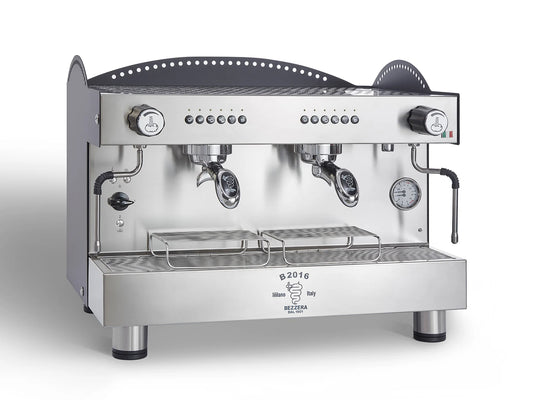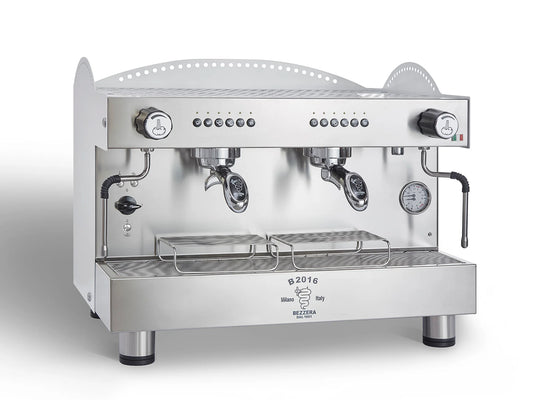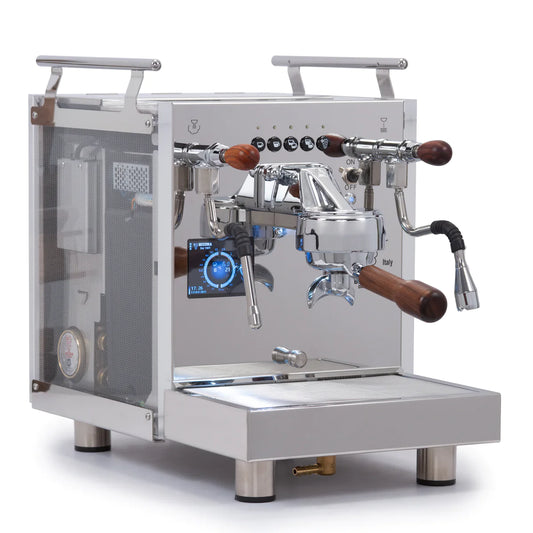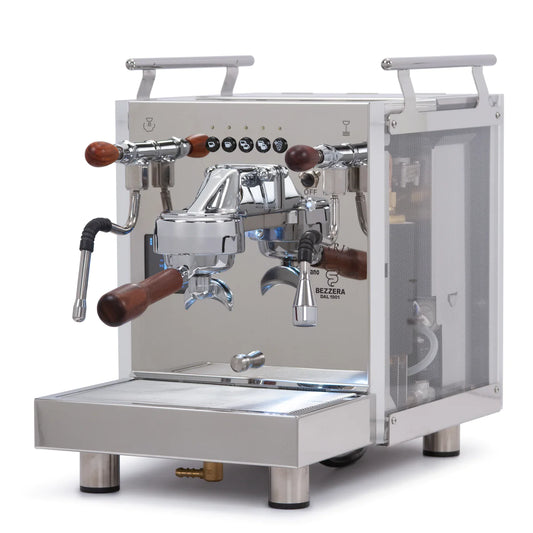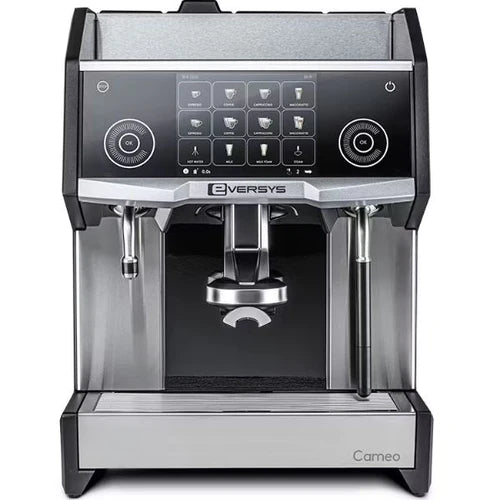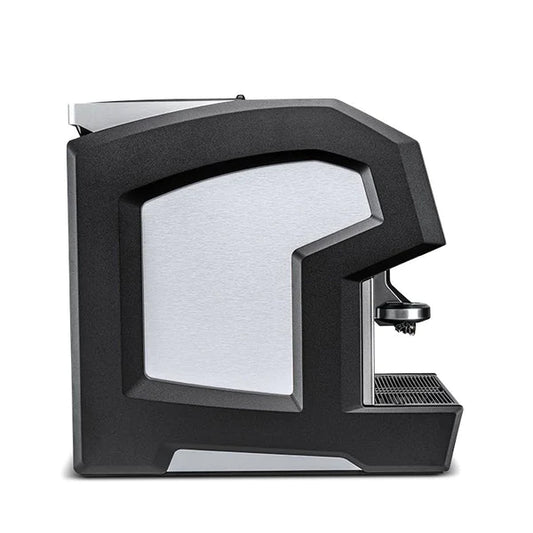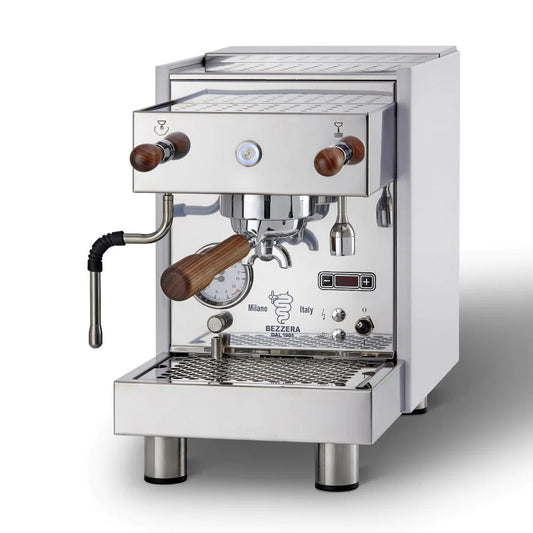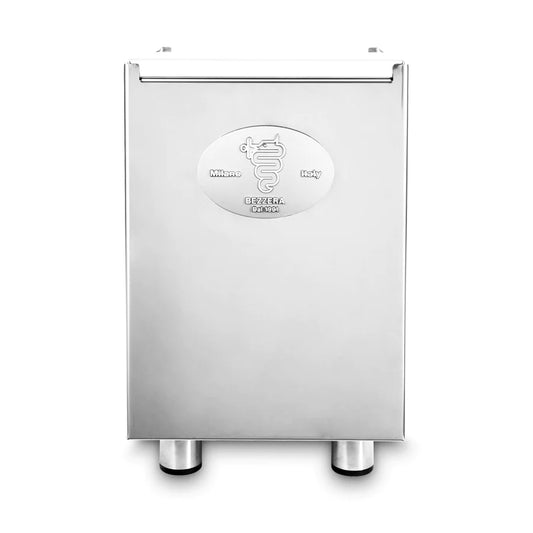How Does an Espresso Machine Work? Understanding the Mechanics of Your Favorite Brew
Table of Contents
- Introduction
- The Basics of Espresso
- Components of an Espresso Machine
- How Espresso Machines Work
- Types of Espresso Machines
- Maintenance and Care for Your Espresso Machine
- Conclusion
Introduction
Did you know that the average American coffee drinker consumes about 3.1 cups of coffee each day? Among the myriad ways to enjoy coffee, espresso stands out, boasting a rich, concentrated flavor that has made it a favorite in coffee shops worldwide. But have you ever wondered how an espresso machine transforms simple ingredients into that small, powerful shot of coffee?
Espresso machines are fascinating devices that have evolved significantly since their inception, and understanding how they work not only deepens our appreciation for our beloved coffee but also enhances our ability to brew the perfect cup at home or in a café setting. In this blog post, we will delve into the intricate workings of an espresso machine—exploring its components, brewing process, and the various types available on the market today.
By the end of this article, you will have a thorough understanding of how espresso machines operate, the science behind espresso extraction, and the importance of each component in creating that perfect shot. We will also discuss the role of quality equipment, like those offered by Coffee Machine Supply, in ensuring optimal results in your coffee endeavors.
Let’s embark on this journey into the world of espresso, illuminating the mechanisms that transform hot water and finely ground coffee into a delightful experience.
The Basics of Espresso
What is Espresso?
Espresso is a concentrated coffee beverage brewed by forcing hot water through finely-ground coffee at high pressure. This process extracts a robust flavor profile and results in a thick, creamy consistency, often topped with a golden layer known as crema. The term "espresso" itself comes from the Italian word for "pressed out," which perfectly describes the method of brewing.
Key Characteristics of Espresso
Espresso differs from regular brewed coffee in several ways:
- Beans: Espresso is typically made from a specific blend of coffee beans, often darker roasted to enhance sweetness and richness.
- Grind Size: The coffee used in espresso is ground much finer than standard coffee grounds, resembling powdered sugar.
- Brewing Method: The high-pressure brewing technique extracts oils and flavors that contribute to espresso's distinctive taste and texture.
- Serving Size: Espresso is usually served in small, concentrated shots, typically ranging from 1 to 2 ounces.
Understanding these fundamental aspects of espresso sets the stage for exploring how espresso machines bring this beloved beverage to life.
Components of an Espresso Machine
While espresso machines vary in design and complexity, they generally share several key components that work together to produce espresso. Here’s a closer look at each of these essential parts:
1. Water Reservoir
The water reservoir holds the cold water that will be heated and transformed into espresso. Depending on the machine, this reservoir can be removable or fixed, and its capacity can vary. For commercial machines, a direct water line may be connected, ensuring a continuous supply of water.
2. Pump
The pump is critical for espresso brewing, as it generates the necessary pressure to force hot water through the coffee grounds. Most modern espresso machines use an electric pump, which can provide a consistent pressure of around 9 bars, essential for proper extraction.
3. Heating Element
The heating element warms the water to the ideal brewing temperature, typically just below boiling (around 190°F to 205°F). This component is key for achieving the right balance of flavor and aroma in the final espresso shot.
4. Group Head
The group head is where the portafilter attaches and serves as the point of contact for the coffee grounds. It houses multiple small holes that distribute water evenly over the coffee puck, ensuring consistent extraction. In commercial machines, multiple group heads allow for brewing several shots simultaneously.
5. Portafilter
The portafilter is a detachable handle that holds the coffee grounds during brewing. It features a basket where the coffee is tamped down to create a compact puck, allowing for proper water flow during extraction. Some baristas opt for bottomless portafilters to analyze extraction quality visually.
6. Steam Wand
Often found on espresso machines, the steam wand is used to froth milk for lattes, cappuccinos, and other espresso-based drinks. It dispenses steam from the heating vessel, allowing baristas to create creamy froth and heat milk efficiently.
7. Control Panel
The control panel features buttons or switches that allow the user to operate the machine, including starting the brew process, engaging the steam wand, and adjusting settings for temperature and pressure.
Understanding these components is crucial for grasping how they interact to create the perfect espresso shot.
How Espresso Machines Work
The Brewing Process
Now that we’ve covered the essential components of an espresso machine, let’s explore the brewing process step-by-step:
- Preparation: Begin by filling the water reservoir with fresh, cold water. If the espresso machine is plumbed in, ensure the water supply is connected.
- Heating: Turn on the machine and wait for the heating element to bring the water to the ideal brewing temperature. Many machines feature indicator lights to signal when they are ready.
- Grinding: Use a quality coffee grinder to grind your espresso beans to a fine consistency. The grind size should resemble powdered sugar, allowing for optimal extraction during brewing.
- Tamping: Place the ground coffee into the portafilter basket and tamp it down firmly to create a compact puck. Proper tamping is essential for even water distribution and extraction.
- Attaching the Portafilter: Secure the portafilter to the group head, ensuring a tight seal. This prevents water from escaping during the brewing process.
- Brewing: Activate the pump to start the brewing process. Hot water is forced through the coffee puck at high pressure, extracting rich flavors and oils. The ideal extraction time for a shot of espresso is around 25 seconds.
- Serving: Once the espresso has been brewed, pour it into a pre-heated demitasse cup. The resulting shot should have a dark, rich color with a layer of crema on top.
- Steaming Milk (if desired): For drinks like lattes or cappuccinos, use the steam wand to froth milk. Submerge the wand in a container of cold milk and activate the steam function to heat and froth the milk to your desired texture.
Quality and Consistency
The quality of the espresso produced is heavily influenced by several variables, including grind size, tamping pressure, water temperature, and extraction time. Skilled baristas adjust these factors to achieve the perfect balance of flavor and texture, demonstrating the importance of both technique and equipment.
Investing in a premium espresso machine from Coffee Machine Supply ensures that you have the tools necessary to produce high-quality espresso consistently. Our selection of top-tier machines is designed to meet the needs of both home enthusiasts and commercial operators.
Types of Espresso Machines
Espresso machines come in various designs, each catering to different preferences and uses. Here are the main types you might encounter:
1. Manual Espresso Machines
Manual machines require the user to operate a lever to create pressure for brewing. These machines offer a hands-on approach, allowing coffee enthusiasts to control every aspect of the brewing process. Lever machines are often favored by purists who enjoy the art of espresso-making.
2. Semi-Automatic Espresso Machines
Semi-automatic machines combine manual and automated functions. The user must grind, tamp, and start the brewing process, but the machine controls the water pressure. This type of machine provides a balance between control and convenience, making it popular among home baristas.
3. Fully Automatic Espresso Machines
Fully automatic machines streamline the brewing process by automating the water flow and pressure control. Users can select their desired drink options, and the machine handles the rest, making it an excellent choice for those seeking convenience without sacrificing quality.
4. Super-Automatic Espresso Machines
Super-automatic machines take automation a step further, integrating grinders and milk frothers into the system. With the push of a button, users can brew espresso, froth milk, and create a variety of drinks. These machines are ideal for those who want a quick, hassle-free coffee experience without compromising on flavor.
5. Capsule Espresso Machines
Capsule machines utilize pre-packaged coffee pods to simplify the brewing process. While they offer convenience and consistency, they may not provide the same depth of flavor as freshly ground coffee. Capsule machines are popular among those who prioritize ease of use.
Regardless of the type you choose, investing in a machine from Coffee Machine Supply ensures that you receive a quality product designed for optimal performance and durability.
Maintenance and Care for Your Espresso Machine
To prolong the life of your espresso machine and maintain optimal performance, regular maintenance is essential. Here are some tips to keep your machine in top shape:
1. Regular Cleaning
Clean the portafilter, group head, and steam wand after each use to prevent coffee residue buildup. Use a brush to remove any grounds from the group head and wipe the steam wand with a damp cloth.
2. Descaling
Mineral buildup can affect the performance of your espresso machine. Descale your machine regularly, following the manufacturer’s guidelines, to remove any deposits and ensure efficient operation.
3. Water Quality
Use filtered or purified water to prevent mineral buildup and improve the taste of your espresso. Tap water can introduce impurities that negatively impact flavor and machine performance.
4. Scheduled Maintenance
Refer to the manufacturer’s instructions for any scheduled maintenance tasks. Some machines may require professional servicing, especially commercial models used frequently.
By prioritizing maintenance, you can enjoy consistently great espresso while extending the lifespan of your machine.
Conclusion
In conclusion, understanding how espresso machines work empowers coffee enthusiasts to appreciate the artistry behind each cup. From the intricate components like the water reservoir and pump to the brewing process that transforms ground coffee into a rich espresso shot, each element plays a crucial role in the final product. Whether you are a home barista or a café owner, investing in a premium espresso machine from Coffee Machine Supply can elevate your coffee experience.
As you explore the world of espresso, consider how you can apply this knowledge to enhance your brewing technique and deliver exceptional coffee to your customers or friends.
Frequently Asked Questions (FAQ)
1. What is the ideal pressure for brewing espresso?
The ideal brewing pressure for espresso is around 9 bars. This pressure helps to extract the rich flavors and oils from the coffee grounds.
2. How long should it take to brew a shot of espresso?
A well-extracted shot of espresso should take about 25 seconds to brew, yielding approximately 1.5 ounces of coffee.
3. Can I use regular coffee beans for espresso?
While you can technically use any coffee beans, espresso is typically made with a specific blend of beans roasted for espresso preparation. Using beans specifically roasted for espresso will yield the best results in flavor and aroma.
4. How often should I clean my espresso machine?
You should clean your espresso machine after each use to prevent buildup. Additionally, perform a deep clean and descale the machine every few months, depending on usage and water quality.
5. What is the difference between a manual and an automatic espresso machine?
Manual espresso machines require the user to control the brewing process, while automatic machines handle water flow and pressure automatically. Semi-automatic machines offer a balance of both approaches.
By understanding these aspects of espresso machines, you are well-equipped to appreciate and enjoy the art of espresso-making. Whether at home or in a café setting, the journey from coffee bean to cup is one filled with passion, precision, and the promise of great flavor.

